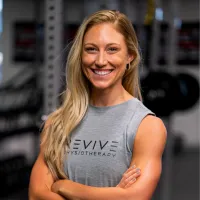Read our Blog

Lifestyle Factors
Lifestyle Factors That Increase Inflammation and Pain
Introduction
At Revive Physiotherapy, we know recovery is about more than just muscles, tendons, and joints—we treat the whole person. While rehab exercises and manual therapy are essential for healing, your daily lifestyle habits can play just as big a role in whether your body recovers or stays trapped in a cycle of pain.
One of the biggest underlying drivers of chronic pain is inflammation. While inflammation is part of the body’s natural healing response, when it becomes chronic and uncontrolled, it fuels persistent pain, slows recovery, and raises the risk of re-injury.
Everyday choices—sleep, diet, hydration, stress levels, and activity—can tip the balance toward inflammation or healing. Below, we’ll break down the most common lifestyle factors that increase inflammation and provide practical strategies to reduce their impact.
1. Lack of Sleep: The Silent Trigger of Inflammation
Sleep is the body’s most powerful recovery tool. During deep sleep, tissues repair, hormones rebalance, and inflammation is regulated.
When you don’t get enough quality sleep:
Inflammatory markers rise (even one night of poor sleep increases cytokines like IL-6 and TNF-α).
Pain sensitivity increases, making aches feel worse.
Healing slows, delaying recovery from injuries or chronic pain.
Tips for better sleep:
Aim for 7–9 hours of consistent, quality rest.
Build a calming pre-bed routine (no screens, low lights, gentle breathing).
Invest in a supportive mattress and pillow, especially if you have back, hip, or shoulder pain.
2. Poor Hydration: Fueling Stiffness and Pain
Proper hydration is critical for joint health, muscle function, and tissue repair.
When you’re dehydrated:
Joints feel stiffer and more sore.
Circulation slows, reducing nutrient delivery to tissues.
Stress hormones like cortisol rise, driving inflammation.
Hydration tips:
Drink enough water to keep urine pale yellow.
Sip throughout the day rather than chugging.
Add hydration-rich foods like fruits, vegetables, and herbal teas.
3. Diet: Pro-Inflammatory vs. Anti-Inflammatory Foods
Nutrition has one of the strongest impacts on inflammation and chronic pain management.
Pro-inflammatory foods to limit:
Refined sugars & processed carbs (candy, soda, pastries).
Processed oils (corn, soybean, sunflower).
Processed meats (bacon, sausage, deli meats).
Fried foods & fast food (high in trans fats).
Anti-inflammatory foods to prioritize:
Omega-3-rich foods (salmon, sardines, walnuts, chia seeds).
Colorful fruits & vegetables rich in antioxidants.
Whole grains & legumes for fiber and gut health.
Olive oil & avocado oil for healthy fats.
Practical swap: Trade fried foods for grilled salmon, soda for water, and processed snacks for nuts or fresh fruit.
4. Alcohol: More Than Empty Calories
Regular alcohol consumption increases systemic inflammation and disrupts healing.
Alcohol can:
Increase gut permeability, leading to “leaky gut” and higher inflammation.
Elevate inflammatory markers like C-reactive protein (CRP).
Disrupt deep, restorative sleep cycles.
Dehydrate tissues, slowing recovery.
Better choices:
Avoid alcohol if breaking a chronic pain cycle.
Limit to 2–3 drinks occasionally, not daily.
Stay hydrated if you do drink.
5. Stress: The Hidden Amplifier of Pain
Chronic stress keeps the body in “fight or flight,” raising cortisol and adrenaline, which drive systemic inflammation.
Stress impacts recovery by:
Increasing muscle tension (neck, back, shoulders).
Disrupting sleep.
Heightening pain sensitivity.
Slowing immune and tissue repair.
Stress-reduction strategies:
Daily mindfulness, journaling, or breathwork.
Exercise to release endorphins and reduce cortisol.
Maintain strong social connections for resilience.
6. Physical Inactivity (or Overactivity): Both Drive Inflammation
Movement balance is key—both sedentary lifestyles and overtraining fuel inflammation.
Too little activity weakens muscles, reduces circulation, and increases fat-driven inflammation.
Too much activity without recovery stresses joints, elevates cortisol, and delays healing.
Movement balance tips:
Combine strength training, cardio, and mobility.
Allow recovery days.
Listen to your body—persistent fatigue may signal overtraining.
7. Smoking and Environmental Toxins
Smoking and exposure to toxins are direct sources of oxidative stress and chronic inflammation.
Smoking in particular:
Damages blood vessels, reducing nutrient delivery.
Elevates systemic inflammation.
Slows tissue repair after injury or surgery.
Steps to reduce exposure:
Seek support to quit smoking.
Ventilate indoor spaces, choose non-toxic products, and filter water if possible.
How Lifestyle Factors Interact
These habits don’t exist in isolation—they create a feedback loop:
Poor sleep → raises stress → increases cravings for unhealthy foods → fuels inflammation → disrupts sleep further.
The good news? Positive changes compound too. Improve sleep and you reduce stress. Eat anti-inflammatory foods and you recover better. Move your body, and you sleep more deeply.
Practical First Steps to Reduce Inflammation
Don’t try to change everything at once. Start small:
Swap soda for water at lunch.
Add one extra serving of vegetables to dinner.
Go to bed 30 minutes earlier.
Take a short walk during a stressful day.
Small, consistent choices reduce inflammation, support healing, and improve long-term health.
Takeaway: Lifestyle and Inflammation Management
Chronic inflammation and pain aren’t just about injuries—they’re strongly influenced by lifestyle factors like sleep, hydration, nutrition, alcohol, stress, physical activity, and smoking.
At Revive Physiotherapy, we combine hands-on therapy, exercise, and lifestyle guidance to help patients break the cycle of pain and inflammation.
📞 Call us today to schedule your consultation or
💻 Book online to start your personalized recovery plan.
When you take control of your lifestyle habits, you take control of your pain and healing journey.
Our one-on-one treatment sessions ensure that you fully understand your body and take ownership of your health so that you can have control over doing the things you love!
Send us a Message
Let's Have a Chat
954 - 519 - 4185
Find us at
2852 E Oakland Park Blvd
Fort Lauderdale, FL 33306
2024 REVIVE PHYSIOTHERAPY | ALL RIGHTS RESERVED


